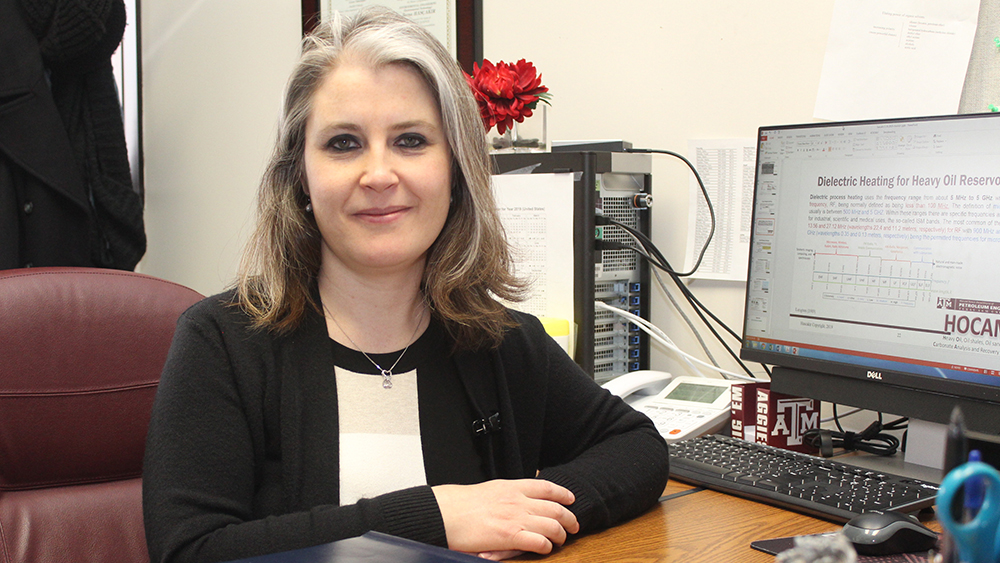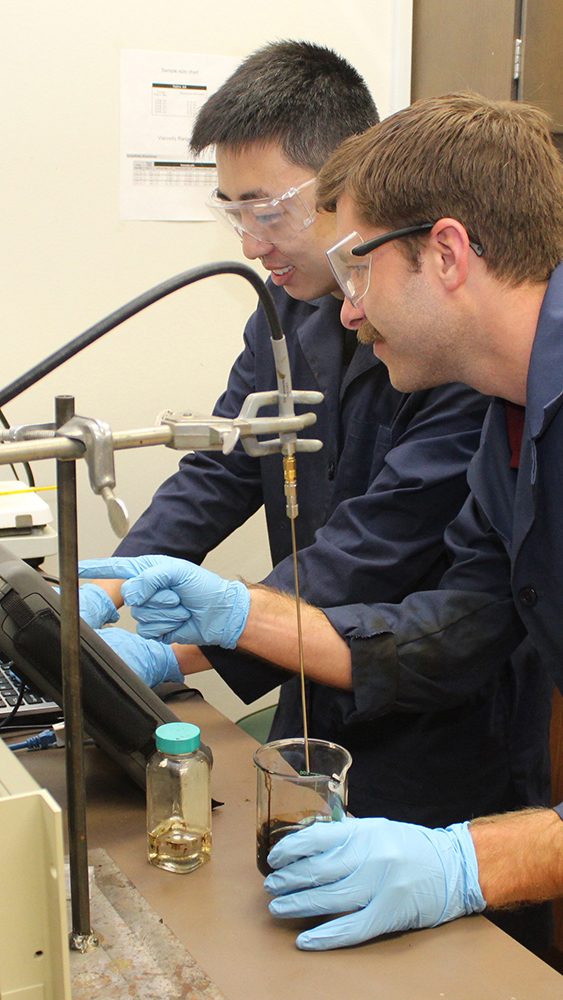
Crude oil extracted from the earth often contains many substances that are hydrocarbon-based, such as other liquids, dissolved solids
Dr. Berna Hascakir, Flotek Industries, Inc. Career Development Professor in the Harold Vance Department of Petroleum Engineering at Texas A&M University, addressed precipitation in two research projects that investigated the reservoir ratios and polarity properties of asphaltenes. She found a way to predict the conditions under which asphaltenes become solid and used methods based on dielectric properties to get the solid material moving again.
Using prediction
Asphaltene, like many substances in the earth, changes phase as pressures or temperatures vary. The problem lies in predicting which conditions bring about the change.
“Think about water,” said Hascakir. “When you lower the temperature of water at atmospheric pressure you make ice, which is solid. In the same way, you have a liquid crude oil and you’re lowering the pressure during oil production. This change makes the crude oil solid, like ice.”
The effects of pressure and temperature on asphaltenes have been well researched, but the variations in oil chemistry and the dielectric constants of reservoir materials that can affect this phase change have not. Hascakir and her students studied these facets of the problem and found the ratios of asphaltenes and other components to oil within the reservoir fluids was significant. The dielectric properties that determine whether reservoir materials were polar or non-polar also affected outcomes. Hascakir devised a method that uses this information to reliably predict conditions where precipitation was likely to happen. Her method will help oil companies address the problem before solidification occurs and plugs up their expensive wells.
“We
Assessing properties
To solve the problem of getting solidified asphaltenes moving again, Hascakir investigated the dielectric properties of the material with deeper interest. There are different dielectric constants in every substance. These constants determine the absorption or reflection of electromagnetic waves. Electromagnetic waves can affect polar molecules, so Hascakir’s research centered on just how polar the materials are inside a reservoir and how well they would respond to this stimulation.
“The solidified substances in precipitation are both polar and non-polar, depending on composition,” said Hascakir. “The trick is to pull them apart using polar and non-polar means.”
The polar nature of solid substances allows for greater heat generation, and electromagnetic waves at microwave frequencies take advantage of this.
“When you are putting something into a microwave - let’s say you are heating up your lunch - the cup is not getting hot, however, the food is getting hot after microwave heating,” explained Hascakir. “How is this happening? Because the dielectric properties of the food are favoring microwave absorption but the cup is not. Any warmth the cup might have is from conduction.”
Asphaltenes, the heaviest and most polar fraction of crude oil, respond to microwaves. This means microwaves have the potential to heat asphaltenes and decrease their viscosity, or resistance to movement. A reservoir, with its rock formations, fluids, gases
Testing solutions
“My student Matthew Morte and I tested different types of oils and different types of reservoir rock,” said Hascakir. “What is certain is that certain types of reservoir rocks and fluids are responding better to stimulation. I am using heat and heavy metals to reduce asphaltene viscosity to make it flow, and now this research is at the patent level.”
Hascakir’s team found a way to control the microwaves under the ground so they can be used as an advanced thermal enhanced oil recovery method. Normal thermal enhanced recovery uses steam injected into the ground to improve oil flow, requiring energy and time to heat water to a boiling point at the surface of the well. Hascakir’s solution does not necessarily require water, depending on reservoir rock composition, and electromagnetic waves on a microwave frequency are more efficient at producing the heat needed to decrease viscosity. This saves time, money and natural resources.
“While you are investing less money, you are investing the same amount of heat,” said Hascakir. “It’s extremely attractive to oil companies. When solid deposition happens, that well will be blocked. You will lose that well and thousands like it. This is happening now in conventional reservoirs and unconventional reservoirs like heavy oil, but mostly in light oils. So this research will help a large-based oil recovery-related problem.”